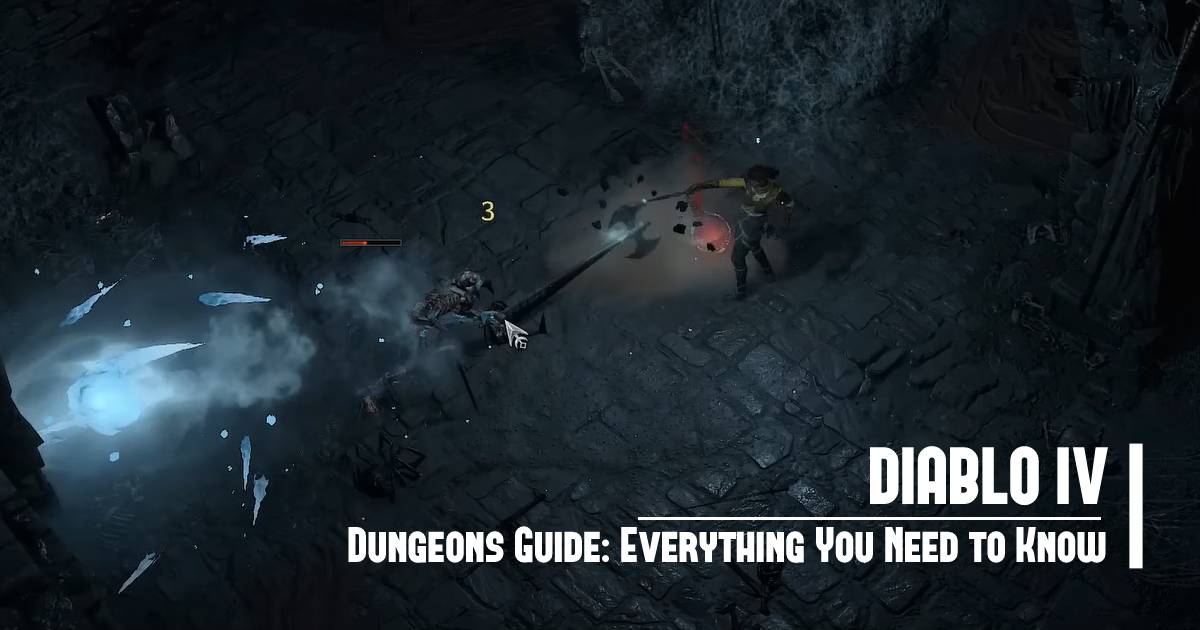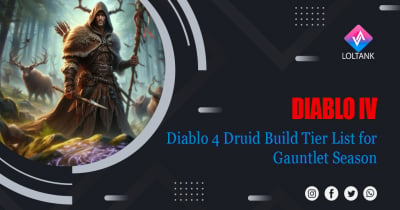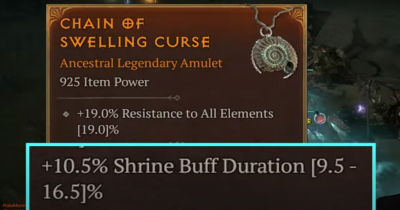Diablo 4 Dungeons Guide: Everything You Need to Know
Diablo 4 includes over 150 dungeons, some of which are tied to the main storyline, while others are part of side quests or are self-contained in terms of plot. There are also mini dungeons consisting of only one room. Completing a dungeon rewards the player with renown. Dungeons are a crucial part of Diablo 4's gameplay, and there have been some significant changes to the system in the past few weeks. In this guide, we'll go over everything you need to know about dungeons in Diablo 4.

↖ Normal Dungeons
The first phase of dungeons in Diablo 4 is the normal dungeons you encounter while going through the main campaign and getting into world tier 3. These dungeons are physical places in the open world that you have to travel to enter, and each one is unique, with its own monster families, layouts, and objectives. There will be over 100 dungeons on launch, and even though each one is unique, they will have some level of randomization to keep them fresh.
Completing a dungeon usually requires you to complete a somewhat randomized objective, with the dungeon ending in a boss fight. The boss fights are fun and challenging, with important mechanics that require you to play around them.
↖ Capstone Dungeons
Once you've completed the main campaign, you can progress into the end game by completing a capstone dungeon to unlock world tier 3. Capstone dungeons are a much more difficult version of the normal dungeons, with a more challenging boss to defeat. They are supposed to be as difficult or more difficult than the world tier you're unlocking by defeating them.
↖ Nightmare Dungeons
After unlocking world tier 3, you can start to obtain nightmare sigils for the nightmare dungeon system. Nightmare dungeons are end game versions of normal dungeons that are much more difficult but offer better loot. Nightmare sigils are obtained through the tree of whispers system, which is essentially the bounty system of Diablo 4.
To get a nightmare sigil, you need to complete bounties in the world and collect a different type of currency. Once you have enough currency, you can turn it into the tree and receive some loot, including nightmare sigils. If you don't like the sigils you're getting, you can deconstruct them to get another resource that will allow you to craft more nightmare sigils to try to get ones you like more.
Nightmare sigils are tiered into different tiers, with higher-tier sigils being more difficult and offering better loot. The nightmare dungeon system is one of the most important systems in the game for farming end game loot and offers a choice of content to complete.
↖ Events spawning
One of the major changes to dungeons is the increased chance of events spawning, from 10% to 60%. Completing these events grants additional loot and Diablo 4 Gold, making it easier to target farm loot. The way dungeons are randomly generated has also been changed, resulting in smarter randomization and less backtracking. Additional objectives have been added, and existing ones have been made easier to deal with and more enjoyable. For instance, collecting animus from elite enemies now grants 10 resources and reduces ability codons by one second.
↖ Codex of Power
The Codex of Power is another important aspect of dungeons. Every time a player completes a dungeon for the first time, they unlock a codex in the Codex of Power. This allows them to permanently unlock a legendary aspect, which can be applied to as many rare or legendary gear pieces as they want. This is similar to applying other legendary powers, but instead of transferring it from one piece of gear to another, players can apply the unlocked aspect from their Codex of Power.
The Codex of Power has a few downsides, such as not containing every legendary power and only offering the lowest rolled versions of those that are included. However, it will play a significant role in gearing up during the end game and in new seasons. Having many aspects in the Codex of Power can make it easier to obtain lower-rolled versions of desired legendary powers and farm for better-rolled versions of those powers. Overall, the changes to Dungeons and the Codex of Power are positive improvements that address player feedback and will likely contribute to a better gameplay experience in Diablo 4.
Conclusion
Dungeons are an integral part of Diablo 4's gameplay, and there are plenty of them to explore. Normal dungeons offer a unique experience, with each one having its own identity, while capstone dungeons and nightmare dungeons provide more difficult challenges with better rewards. The nightmare dungeon system is where you'll spend most of your time in the end game, and it's worth investing in to obtain the best loot.
Most Popular Posts
- Diablo 4 Addons: Useful Website for Build and Crafting
- Diablo 4 Keybinds Mouse Wheel and Left-click Setting Up Guides
- Diablo 4 Ruins of Eridu Dungeon: Farming Legendaries, Unique Items, Gold, and XP
- Diablo 4 EndGame Boss Echo of Lilith Fight Challenge Guides
- Diablo 4 Items Guide: How to Evaluate Item Quality
- Diablo 4 ALT Character: Tips for Efficient Leveling and Loot Farming
Popular Category Lists
- Path of Exile / (873)
- Diablo IV / (702)
- Runescape / (344)
- New World / (172)
- WoW Classic SoD / (171)
- Guild Wars 2 / (159)
- Elder Scrolls Online / (138)
- FFXIV / (135)
- World of Warcraft / (65)
- WOW Classic / (43)
- Elden Ring / (40)
- Throne and Liberty / (36)
- SWTOR / (35)
- Albion / (35)
- Last Epoch / (32)
- League of Legends / (30)
- Dark and Darker / (28)
- Fallout 76 / (27)
- WotLK Classic / (23)
- Genshin Impact / (22)





 0
0









